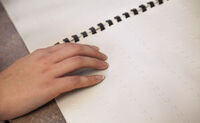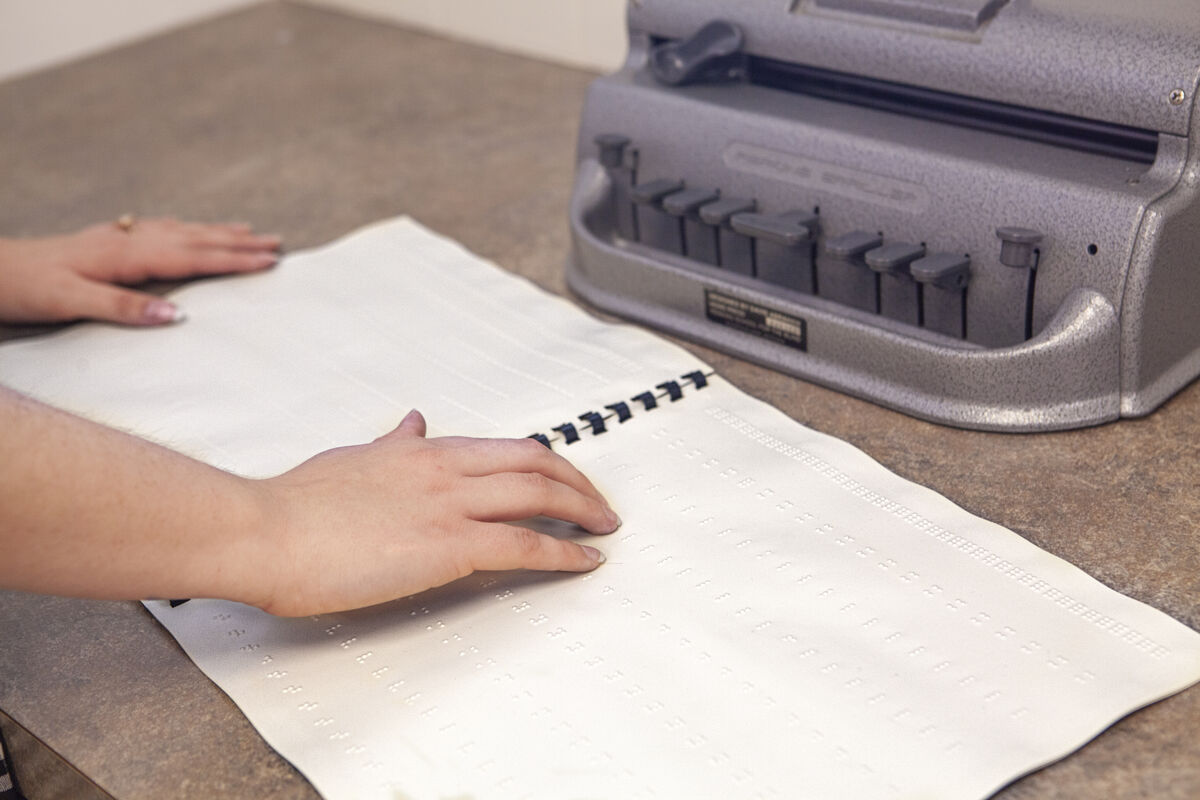Blog: Braille at CSC

January is braille literacy awareness month and with World Braille Day on January 4, it’s a great time to learn more about this communication form!
Did you know there’s more than one type of braille? Braille isn’t a language, it’s a code that can be used in many languages. There’s braille for math, which is different than braille used for writing the alphabet. There’s even sheet music braille, where the braille dots represent parts of musical notes instead of letters.
There are two types of literary braille and Cleveland Sight Center offers classes to learn both. When learning braille, beginners tend to start with uncontracted braille. This is the most basic form of braille and uses the 26 letters of the alphabet. The other type of literary braille is contracted and operates on a series of shortcuts called contractions. In contracted braille, one letter in braille might represent multiple letters, portions of words or an entire word, making it quicker to read. Most books and magazines printed in braille use contracted braille.
When a client expresses an interest in learning braille at Cleveland Sight Center, the case manager makes a referral to the Rehabilitation department for a finger sensitivity test. This test is in a book and each page is different. The test taker may have to follow a line of dots with their fingers or identify different shapes and sizes. If they do well, the client is invited to the braille class. Classes are usually held twice a week for 1.5 hours. It takes around six months to learn uncontracted braille; two to three years for contracted braille.

Additionally, Cleveland Sight Center offers braille transcription services for community members. For example, a business may ask to transcribe a menu, informational pamphlet or program into braille. CSC is lucky to have a volunteer who is certified as a braille transcriber who volunteers his time to transcribe materials for us before they are embossed. When standard print material is transcribed into braille, it’s nearly three times as many pages!
We hope you learned a little more about braille and the resources CSC provides through this blog! Remember that is important to not assume that someone can read braille if they’re visually impaired. Some people lose their vision later in life and don’t feel the need to learn. Others may have enough vision and assistive technology that they can read standard print. Advancements in assistive technology and computers make it easier for people to consume media, like screen readers. Besides, learning braille is a process! Learning braille takes as much commitment as learning a new language.
If you are interested in learning braille, getting a braille transcription or purchasing braille products in our store, please call us at 216-791-8118 or visit clevelandsightcenter.org







